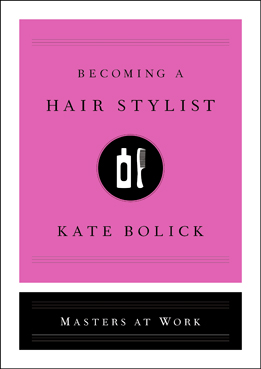|
Becoming a Hair
Stylist
by Kate Bolick
c.2019, Simon & Schuster
$18.00 / $25.00 Canada
144 pages
By Terri Schlichenmeyer
The Truth Contributor
Sometimes, you feel like you could just dye.
Or curl, or cut, or braid. Some days, you want a change in
style, a different ‘do, maybe something like you’ve seen in
a magazine. Or you want to be the person who makes that
happen, so read Becoming a Hair Stylist by Kate
Bolick and see if you have what it takes.
You have to think that people have fussed with their hair
for as long as people have had hair. Egyptian lovelies, for
instance, used juniper berries to hide their grays. Roman
women used leeches fermented in vinegar as a dye. Wealthy
women a century ago had servants do their ‘do’s; just 60
years ago, few people washed their hair more than once a
week and most women did their hair at home.
|
 |
|
Says Bolick, America’s first hair salon belonged to Martha
Harper, who’d inherited a secret formula for hair growth in
the late 1880s. During Harper’s time, women grew their hair
as long as possible; short hair was “a sign of poverty.” For
black women, Madame C.J. Walker’s potions and pomades
revolutionized how their hair was styled, and she became a
millionaire for it.
In the 1950s and 60s, though, Vidal Sassoon and Vogue
magazine made going to the salon a thing every woman wanted
to do: getting your hair styled at a salon was suddenly
affordable, and stylists were believe to be specialists with
skills – even though, at the same time, people often
callously thought that styling hair was a career for those
lacking intelligence.
Today becoming a hair stylist takes a lot of hard work,
training and keen people skills. You’ll have to get a
certain amount of schooling, depending on the state in which
you want to practice, and you’ll learn the basics first,
followed by human anatomy, sanitation, and chemistry. You’ll
get tons of hands-on experience, and if you want to style
African American hair, you may take extra classes before
tackling a two-part licensing test. Once you’ve done that,
says Bolick, “the sky is the limit.”
While there is an abundance of information inside
Becoming a Hair Stylist, and while it’ll help
prospective beauticians to decide if the career is right for
them, this book is also a little disappointing.
Author Kate Bolick relies quite heavily on the story and
experiences of one salon owner and her employees in
New York City, adding snippets of tale from other large
cities, but she misses writing about neighborhood and rural
salon owners whose stories could have added so much more to
the overall. That lack does a disservice to the
multi-thousands of people hoping to become small-town
independent stylists; this, and a dearth of pitfalls a salon
owner might find, further lessens the information within.
And yet – for a high-schooler thinking about cosmetology
school, or for an adult heading back to school, this book
offers at least a basic start. If that’s for you and you’re
eager to get going, Becoming a Hair Stylist is a book
to curl up with.
|